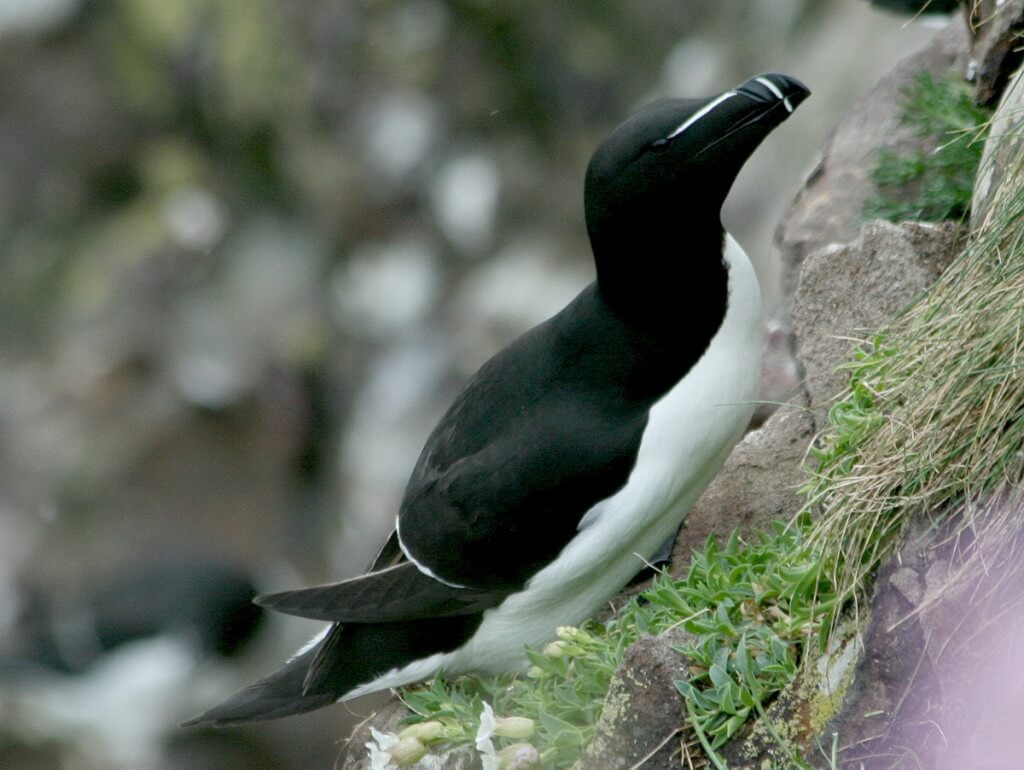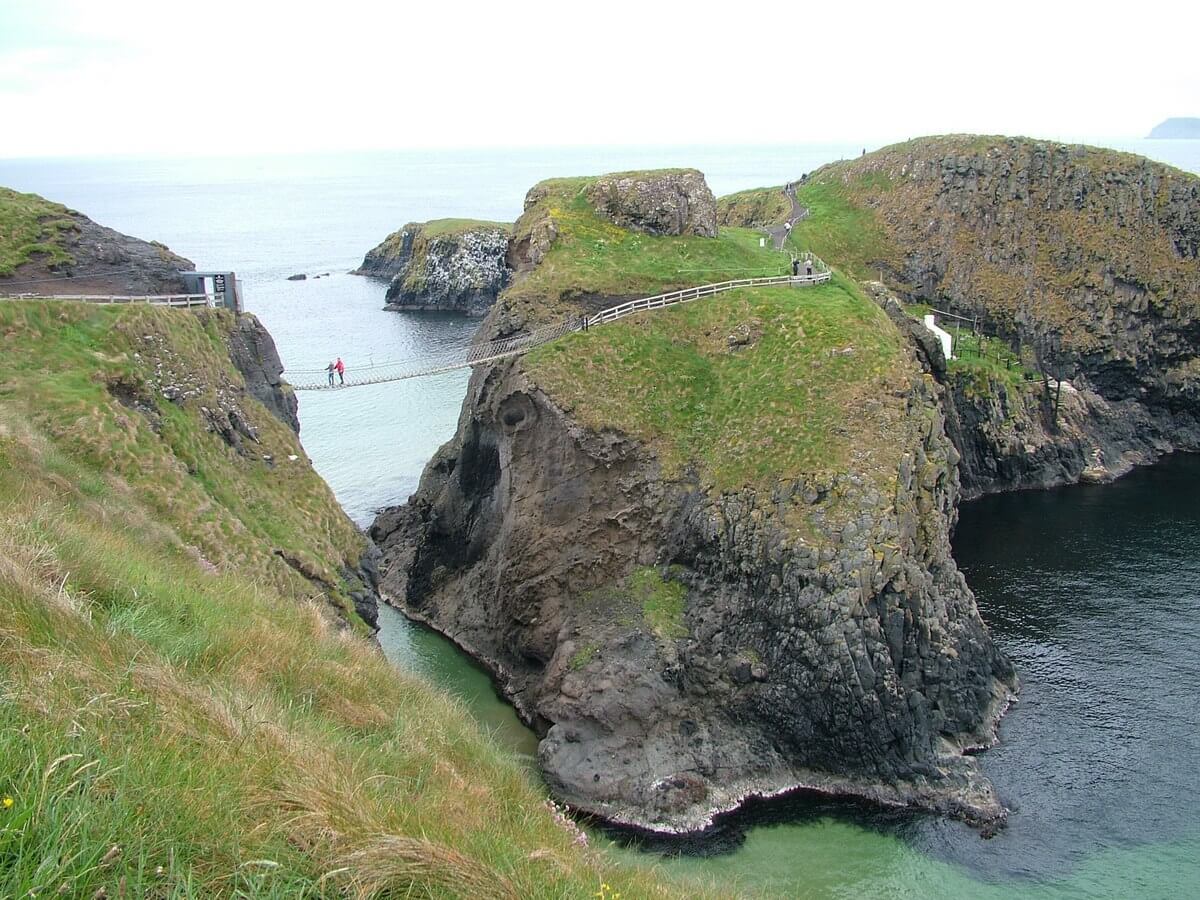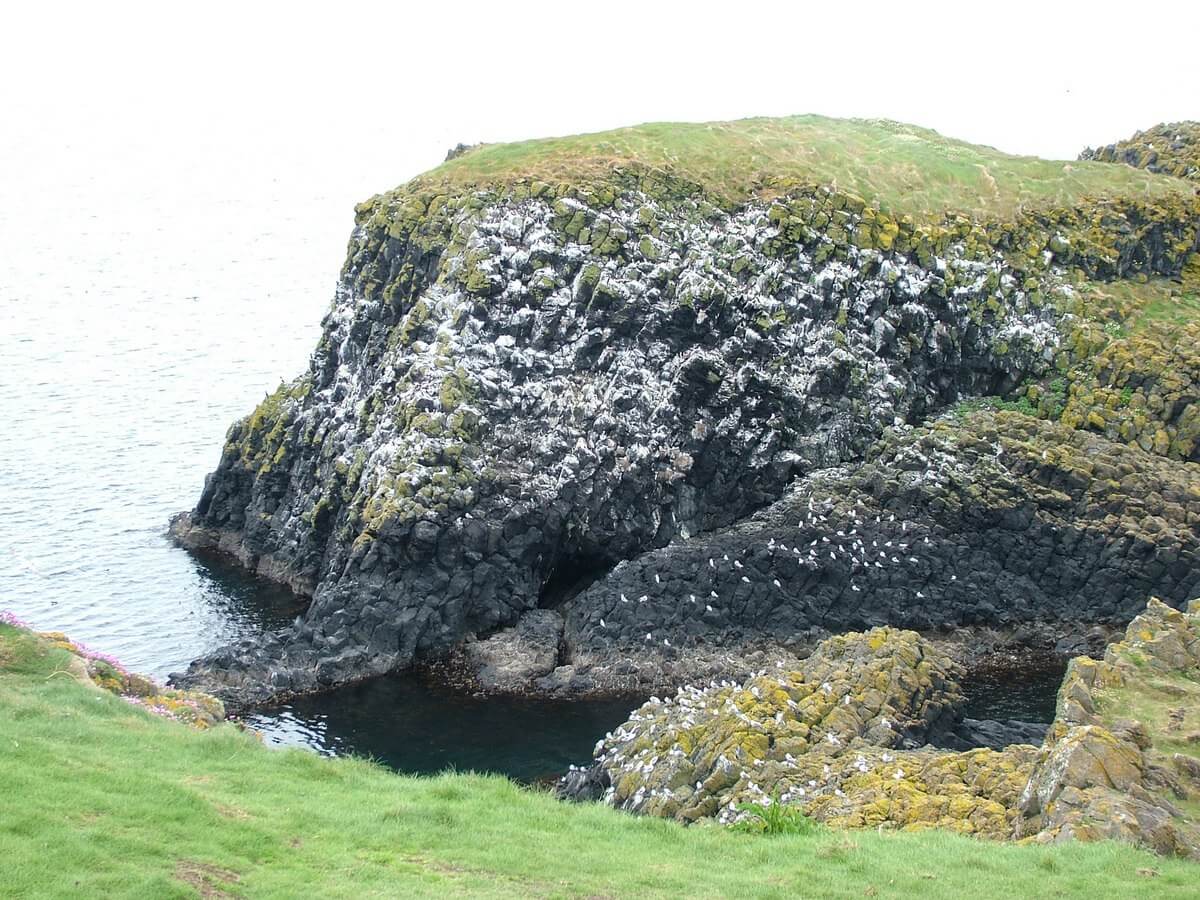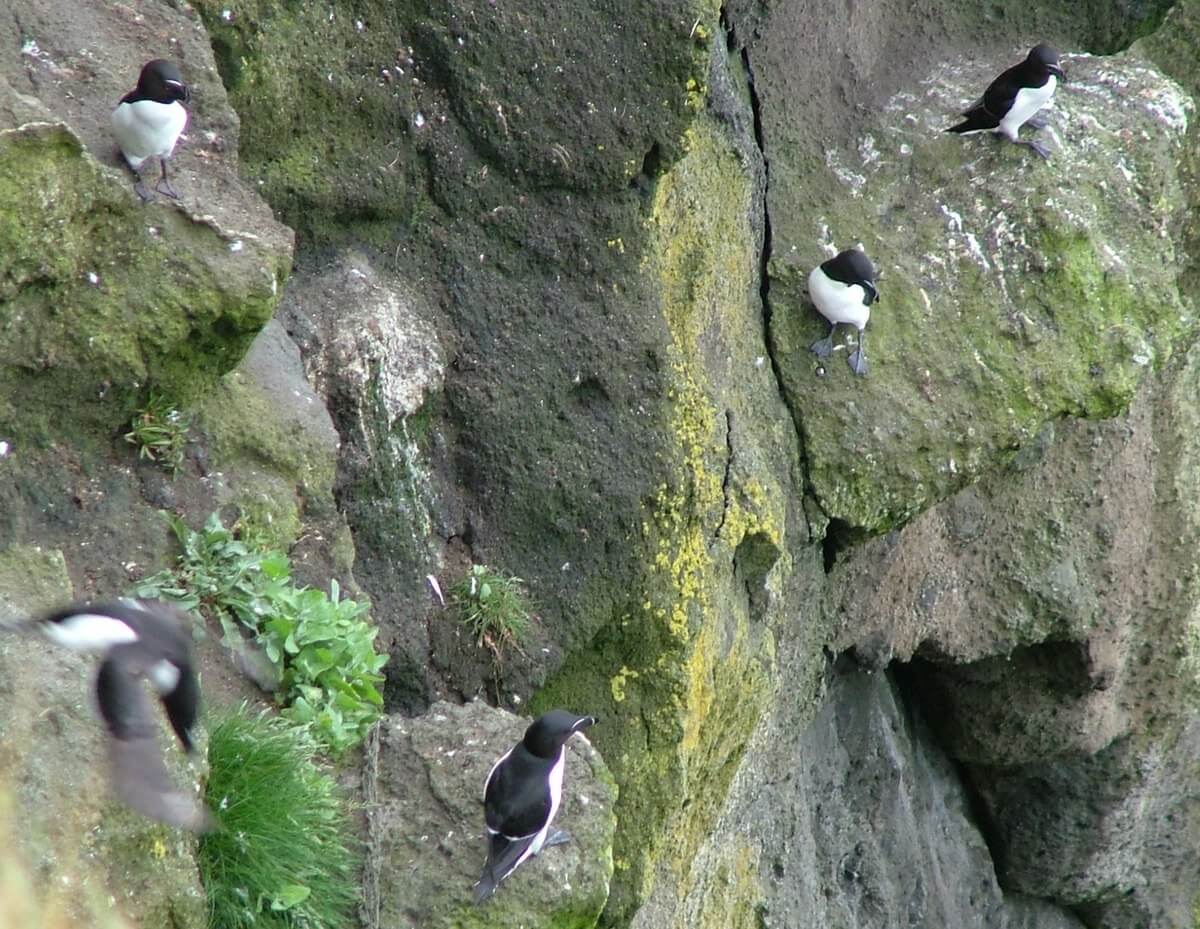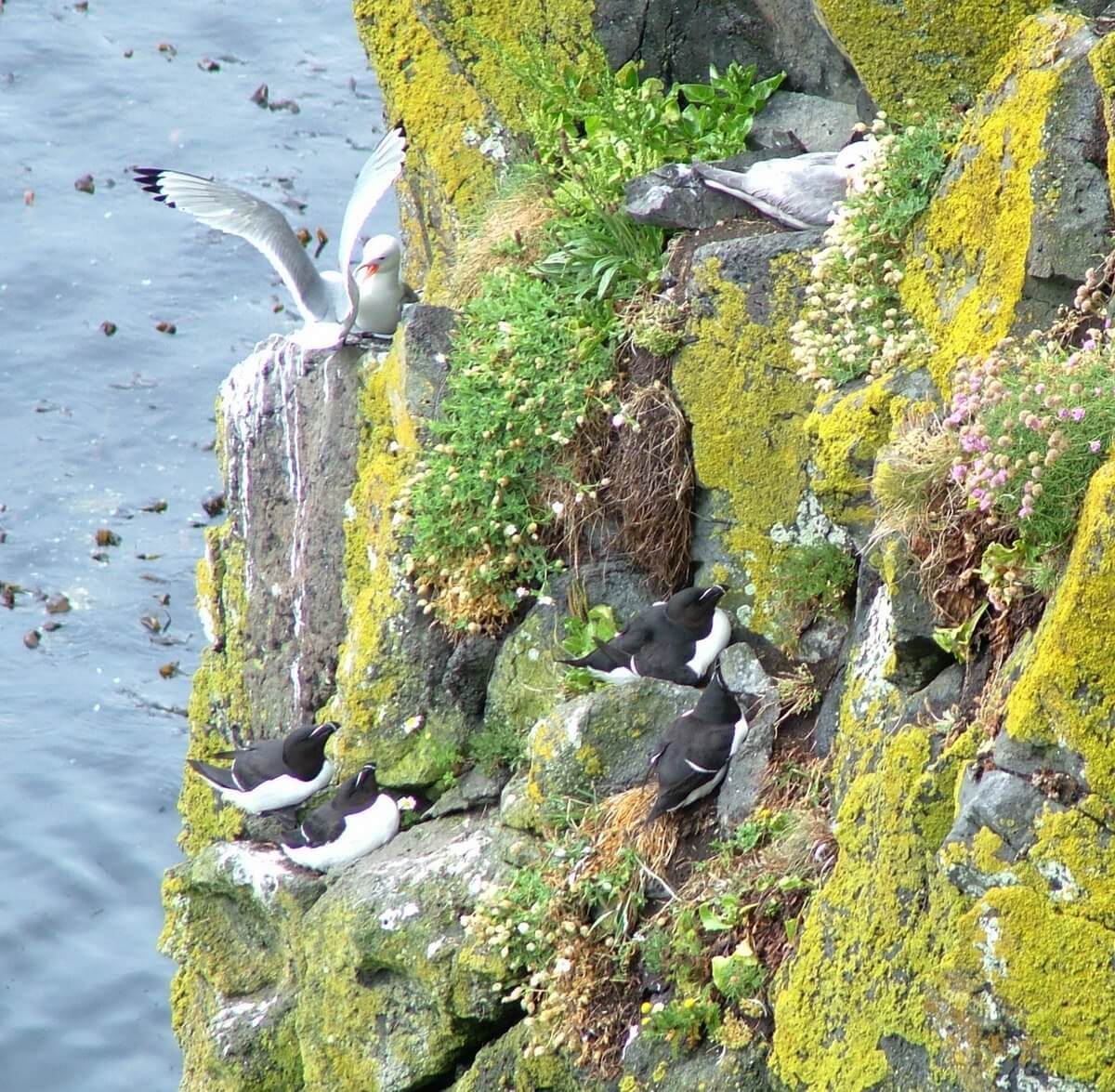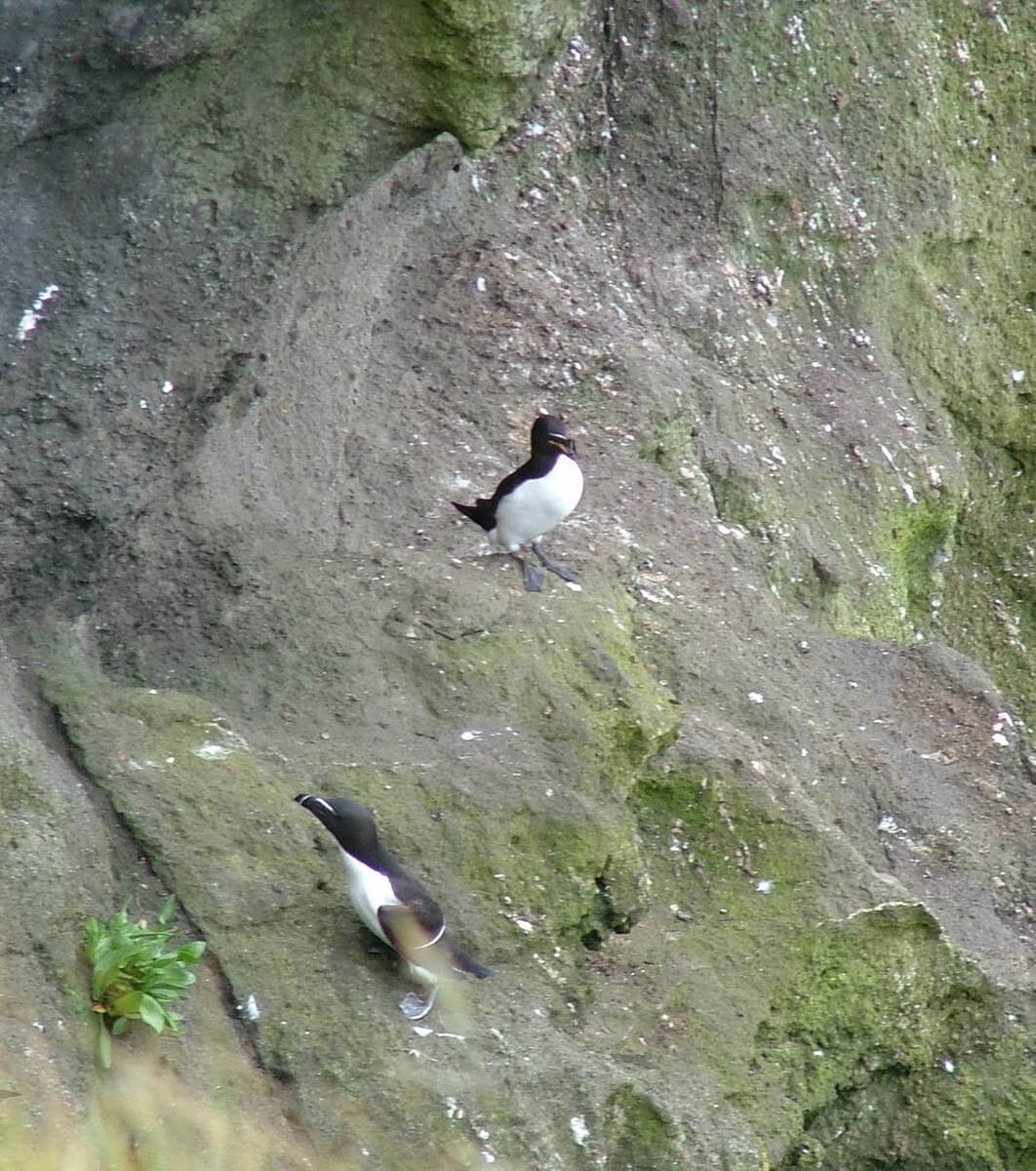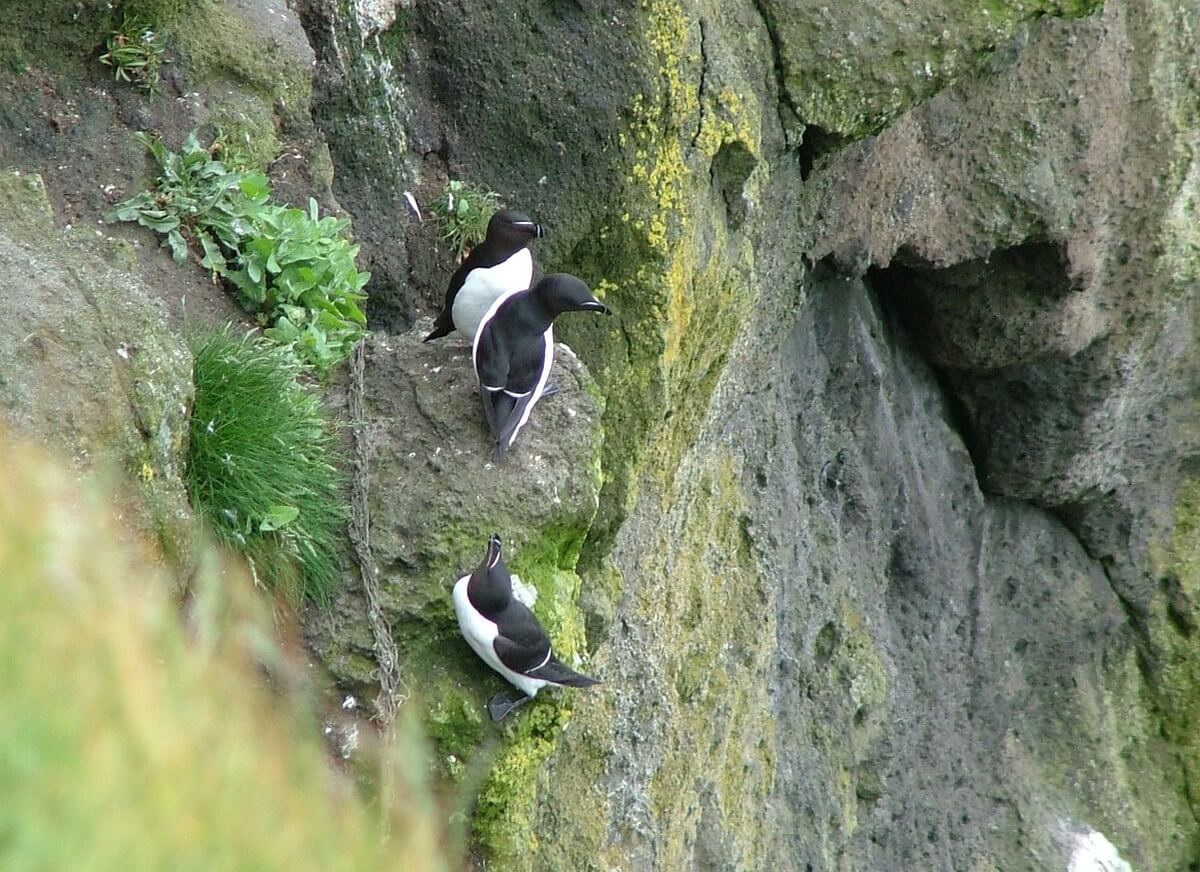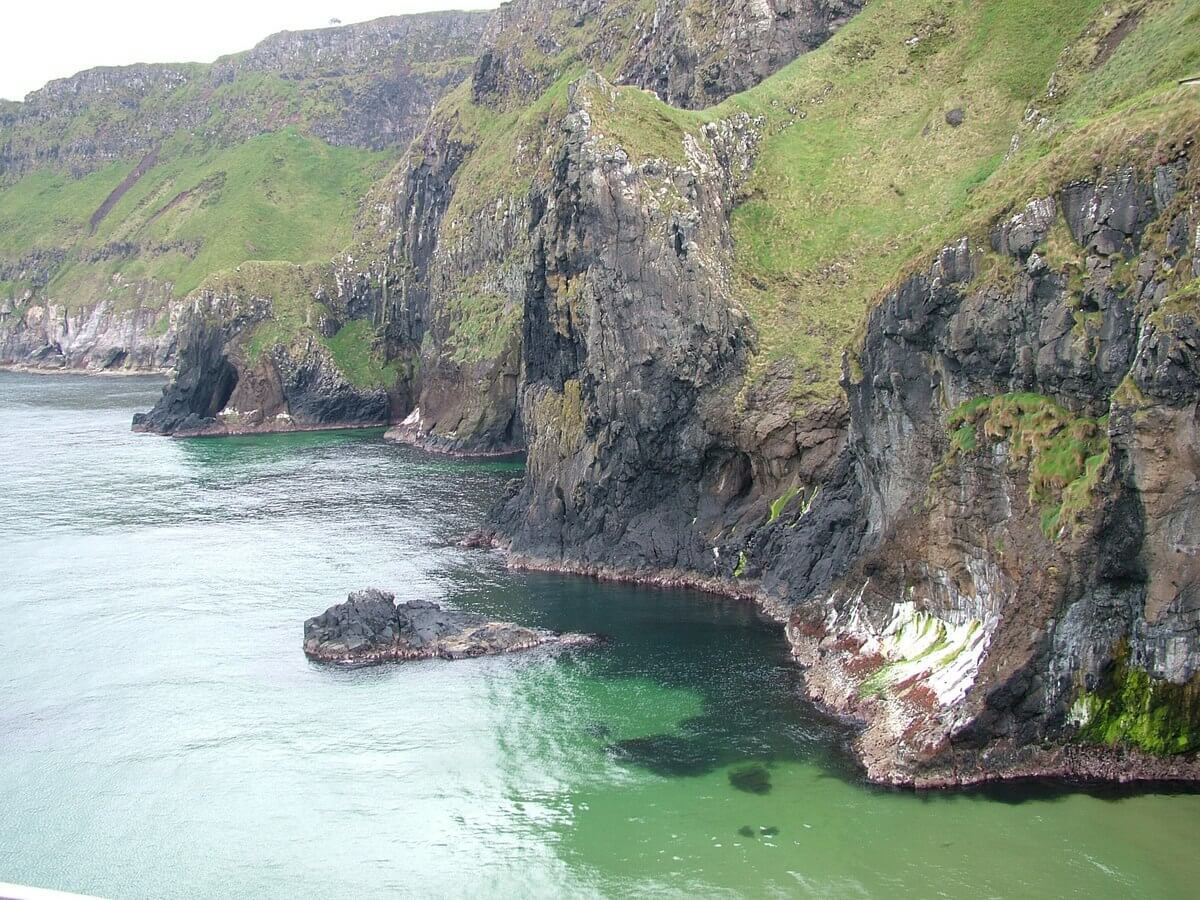Razorbill Auks On Carrick-a-Rede In Northern Ireland
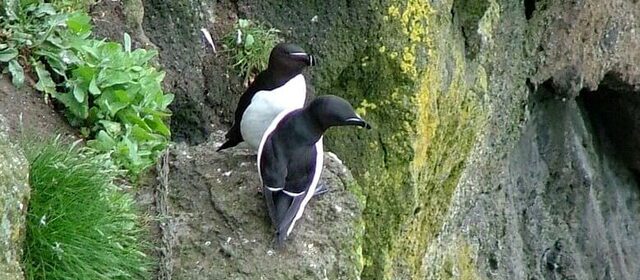
At the time Bob and I visited Northern Ireland, we had only a casual interest in birds and animals, so it was just by happenstance that we took several photographs of the peculiar looking birds called Razorbill auks (Alca Torda) that were nesting on Carrick-a-Rede Island. What struck us about their appearance was the thick black beak that is so deep and blunt.
We had gone to Carrick-a-Rede for the express purpose of testing our resolve on the swinging rope bridge that hangs between the mainland and the small island. Once there, we learned that the immediate area is recognized as a place of Special Scientific Interest because of the unique geology, flora and fauna found there.
Located a mere 65 feet (20 m) offshore, the island of Carrick-a-Rede was formed when lava solidified to block the feeder vent of an ancient volcano. Centuries of erosion of the softer rock around the vent hole served to isolate the volcanic plug, as it is known, from the mainland, and voila! The island was formed. The unique combination of rocks, climate, chemical makeup of the soil and location has resulted in a distinctive habitat.
Carrick-a-Rede is a tiny island that looks more like a narrow peninsula jutting out into the sea, and it is the cliffs along the sides of this tiny land mass that have gained favour with a variety of seabirds as a nesting locale. Razorbills prefer cliff-side nesting sites because they make it more difficult for some predators like Arctic Foxes and Red Foxes to reach the eggs or young birds. Other predators include peregrine falcons, crows, ravens and even large gulls.
Kittiwake, Common and Black Guillemots, Razorbill auk, Buzzard, Peregrine, Shag and Fulmar are the most common species seen along this stretch of the coast, and during breeding season, as it was when we visited Ireland, these same seabirds can be seen nesting around Carrick-a-Rede Island.
It wasn’t until Bob and I had completed a circular tour around the perimeter of the island and prepared to make our way back across the rope bridge that we actually found a spot that allowed a good view of some of the nesting birds. The overlook was actually quite close to the bridge and that is where we spotted these Razorbills or Razorbill Auks as they are also known.
From our observation point near the hanging bridge, Black-legged Kittiwakes (Rissa tridactyla) and Razorbill Auks could both be seen on their nest sites. The coastal cliffs provide perfect habitat for these nesting birds. Razorbills select crevices on the open faces of the rocks or hidden amongst the boulders where they deem the young will be best protected from predators. Simple nests are constructed of plant debris and pebbles.
One notable characteristic of the Razorbills is their decidedly long tail with feathers that are longer at the centre than those of other Alcids; this is uncommon for an Auk. As Bob and I looked on, it was impossible to distinguish the males from the females since they are identical in appearance. A mated pair of Razorbill birds will be devoted to one another. They, like several other bird species, choose one partner for life, and only one egg is laid by a female each year.
The location of the Razorbill colony on Carrick-a-Rede is perfectly suited to these agile birds, but it was clearly evident that the surrounding cliffs were also inhabited by mating pairs. Sea cliffs are the preferred site of a Razorbill colony because these birds require immediate access to the sea for foraging.
Razorbill chicks are unable to fly even when it is time for them to leave the colony, so they must have access to the sea where they learn to feed in the continental shelf waters close to shore. Although we had no opportunity to see the Razorbills seeking prey, these Auks use their short powerful wings to propel themselves through the water when they dive deep to nab fish. Depending on their location, Razorbills feed on sandeels, capelin, sprats, herrings, sandlance or even juvenile cod.
With the two species of Razorbills that populate North Atlantic regions of the planet, it is still believed that fewer than 1,000,000 breeding pairs survive, making them the rarest Auks in the world. We were saddened to learn that the future of this species is threatened in part by the use of fishing nets, pollution and declining fish stocks, so the health of the Earth’s marine environment cannot be stressed enough. We were thrilled to see that conditions here have supported such a thriving colony of these striking birds.
Frame To Frame – Bob and Jean

